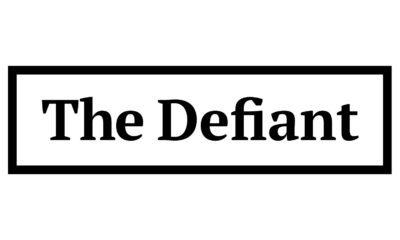DeFi
Transforming DeFi with Reliable On-Chain Data Feeds

The ability of decentralized finance (DeFi) to provide financial services directly to customers has revolutionary potential. The success of DeFi in the meantime relies on accurate and consistent data transfers.
By providing dependable, low-latency pricing feeds on-chain, a protocol known as Pyth Network aims to become a key platform for DeFi, hence enhancing the functionality and reliability of DeFi applications.
Understanding the Role of Oracles in DeFi
Oracles are necessary for DeFi (Decentralized Finance) as trustworthy data sources as they allow blockchain smart contracts to operate with up-to-date market data. In the lack of oracles, DeFi apps would be limited in their capabilities to using just on-chain data.
Many problems arise when DeFi functions without reliable oracles. Of course, one major issue is incorrect pricing. Accurate asset evaluations might lead to significant financial losses, hence precise price feeds are necessary for lending, borrowing, trading, and derivatives. Exact asset values are required for these processes.
Another problem is security risks. The dependability of data streams makes DeFi systems manipulable. Malevolent actors may compromise the integrity of the system by using these weaknesses to manipulate prices and conduct fraudulent transactions.
Latency is also rather crucial. DeFi protocols may suffer from missed chances and poor decision-making caused by data transfer delays. For maximum performance, DeFi apps need real-time data.
Oracles are critical to DeFi because they provide data accuracy, enhance security, and lower latency—all required for decentralized financial systems’ smooth and efficient operation.
Introducing Pyth Network
Pyth Network is an oracle protocol that connects market data owners with applications on multiple blockchains. It provides reliable, high-quality, and low-latency data feeds essential for DeFi applications.
Major exchanges and market-making firms make up the almost 100 market data sources that comprise Pyth Network. Comprehensive and reliable data are ensured in this manner. Pyth Network is widely known in the DeFi market, with over 350 protocols dispersed across over 55 blockchains.
Pyth Network provides many necessary tools to developers. Price Feeds service prices over 500 assets in real time, ensuring DeFi applications can access accurate market data.
Useful for settlement and research, the Benchmarks offering offers historical price data for usage both on-chain and off-chain. Entropy product also generates secure random numbers on the blockchain for applications needing certified unpredictability.
Pyth Network’s broad developer product range and robust network of data providers might make it crucial to DeFi for trustworthy market data.
How Pyth Network Works
Pyth Network links blockchain-based Oracle software, data suppliers, and applications that utilize its price information. For many assets, real-time market data is provided by more than 100 organizations, including big exchanges and market-making firms. Multiple providers ensure reliable and solid data, which reduces the likelihood of errors and manipulation.
The central Oracle software of Pyth’s processes and gathers data from many vendors. It calculates a confidence interval to illustrate the reliability of the information and combines the pricing inputs into a single price for each asset using a sophisticated algorithm. Blockchain verification of this process ensures its transparency.
Pyth price feeds are used by applications that access exact, real-time data for lending, borrowing, trading, and derivatives. They get the data on chain as needed to ensure its currentness and lessen latency issues. This on-demand approach supports quickly evolving marketplaces where instantaneous data is crucial.
Pyth Network relies on reliable on-chain Oracle software, reliable data providers, and easy application interaction to ensure that DeFi applications operate with maximum accuracy, security, and efficiency. It is partly for this that decentralized finance is expanding and reliable.
Contribution of Pyth to the DeFi Ecosystem
By offering accurate and trustworthy price feeds, Pyth Network enhances DeFi applications, enabling these systems to operate with great confidence in their financial data.
Transaction integrity has to be maintained, financial inequalities have to be prevented, and reliable price feeds have to guard against abuse caused by false data. The trust this reliability creates between developers and customers will determine how DeFi solutions are developed and used.
It is clear from the fact that Pyth Network is used by over 350 protocols and is linked to more than 55 blockchain ecosystems how much various DeFi platforms rely on its data. Pyth supports several blockchains so that many applications and users may access its great data. This compatibility will allow Pyth’s reliable data to be used by numerous DeFi protocols, hence enhancing their security and use.
With over 450 price feeds covering a wide variety of financial assets, including US equities, commodities and cryptocurrencies, Pyth Network meets the many needs of the DeFi ecosystem. Because of precise, real-time price information, DeFi systems can provide sophisticated and reliable financial services for trading, lending, and derivatives. This wide asset coverage not only satisfies a variety of consumer needs but also enables DeFi to develop innovative financial solutions.
The accurate and reliable price inputs from Pyth Network greatly influence the DeFi ecology. Its wide applicability and extensive asset coverage enhance the possibilities of DeFi apps, allowing a range of financial products and expanding the boundaries of decentralized finance.
Participation of the Community and Governance
The Pyth Network is governed by the PYTH token, which is necessary to decentralized decision-making and participation incentive. A structured staking and voting process allows PYTH token holders to influence the network’s future.
Token owners who want to participate in governance must tie up their PYTH tokens for a certain period. Stacked tokens provide their holders voting power because each token is worth one vote. Decisions are ensured to reflect the interests of the community at large via the democratic process.
To launch a proposal, token holders must contribute at least 0.25 percent of all PYTH tokens. Proposals must pass with a majority of “yes” votes and a certain agreed-upon quorum within seven days. The type of proposal influences the quorum required, which ensures that more significant changes get greater support.
Among the numerous topics that suggestions might cover are update costs, reward distribution, software improvements, and new price feeds. Another one may be choosing data publishers that maintain strict standards of authenticity and trustworthiness. These many proposal types allow for comprehensive network improvements when the community participates.
Pyth’s management depends on community involvement. A lively and engaged community guarantees the network’s decentralization and reflects user interests. This involvement allows the network to respond to new issues with better security and operation.
Conclusion
By delivering reliable on-chain data feeds, Pyth Network is promoting decentralized finance (DeFi) and improving the precision and security of DeFi applications. Including Pyth’s solutions into their platforms and participating in its governance would help developers and other stakeholders advance the DeFi sector’s ongoing innovation and progress.
The ability of decentralized finance (DeFi) to provide financial services directly to customers has revolutionary potential. The success of DeFi in the meantime relies on accurate and consistent data transfers.
By providing dependable, low-latency pricing feeds on-chain, a protocol known as Pyth Network aims to become a key platform for DeFi, hence enhancing the functionality and reliability of DeFi applications.
Understanding the Role of Oracles in DeFi
Oracles are necessary for DeFi (Decentralized Finance) as trustworthy data sources as they allow blockchain smart contracts to operate with up-to-date market data. In the lack of oracles, DeFi apps would be limited in their capabilities to using just on-chain data.
Many problems arise when DeFi functions without reliable oracles. Of course, one major issue is incorrect pricing. Accurate asset evaluations might lead to significant financial losses, hence precise price feeds are necessary for lending, borrowing, trading, and derivatives. Exact asset values are required for these processes.
Another problem is security risks. The dependability of data streams makes DeFi systems manipulable. Malevolent actors may compromise the integrity of the system by using these weaknesses to manipulate prices and conduct fraudulent transactions.
Latency is also rather crucial. DeFi protocols may suffer from missed chances and poor decision-making caused by data transfer delays. For maximum performance, DeFi apps need real-time data.
Oracles are critical to DeFi because they provide data accuracy, enhance security, and lower latency—all required for decentralized financial systems’ smooth and efficient operation.
Introducing Pyth Network
Pyth Network is an oracle protocol that connects market data owners with applications on multiple blockchains. It provides reliable, high-quality, and low-latency data feeds essential for DeFi applications.
Major exchanges and market-making firms make up the almost 100 market data sources that comprise Pyth Network. Comprehensive and reliable data are ensured in this manner. Pyth Network is widely known in the DeFi market, with over 350 protocols dispersed across over 55 blockchains.
Pyth Network provides many necessary tools to developers. Price Feeds service prices over 500 assets in real time, ensuring DeFi applications can access accurate market data.
Useful for settlement and research, the Benchmarks offering offers historical price data for usage both on-chain and off-chain. Entropy product also generates secure random numbers on the blockchain for applications needing certified unpredictability.
Pyth Network’s broad developer product range and robust network of data providers might make it crucial to DeFi for trustworthy market data.
How Pyth Network Works
Pyth Network links blockchain-based Oracle software, data suppliers, and applications that utilize its price information. For many assets, real-time market data is provided by more than 100 organizations, including big exchanges and market-making firms. Multiple providers ensure reliable and solid data, which reduces the likelihood of errors and manipulation.
The central Oracle software of Pyth’s processes and gathers data from many vendors. It calculates a confidence interval to illustrate the reliability of the information and combines the pricing inputs into a single price for each asset using a sophisticated algorithm. Blockchain verification of this process ensures its transparency.
Pyth price feeds are used by applications that access exact, real-time data for lending, borrowing, trading, and derivatives. They get the data on chain as needed to ensure its currentness and lessen latency issues. This on-demand approach supports quickly evolving marketplaces where instantaneous data is crucial.
Pyth Network relies on reliable on-chain Oracle software, reliable data providers, and easy application interaction to ensure that DeFi applications operate with maximum accuracy, security, and efficiency. It is partly for this that decentralized finance is expanding and reliable.
Contribution of Pyth to the DeFi Ecosystem
By offering accurate and trustworthy price feeds, Pyth Network enhances DeFi applications, enabling these systems to operate with great confidence in their financial data.
Transaction integrity has to be maintained, financial inequalities have to be prevented, and reliable price feeds have to guard against abuse caused by false data. The trust this reliability creates between developers and customers will determine how DeFi solutions are developed and used.
It is clear from the fact that Pyth Network is used by over 350 protocols and is linked to more than 55 blockchain ecosystems how much various DeFi platforms rely on its data. Pyth supports several blockchains so that many applications and users may access its great data. This compatibility will allow Pyth’s reliable data to be used by numerous DeFi protocols, hence enhancing their security and use.
With over 450 price feeds covering a wide variety of financial assets, including US equities, commodities and cryptocurrencies, Pyth Network meets the many needs of the DeFi ecosystem. Because of precise, real-time price information, DeFi systems can provide sophisticated and reliable financial services for trading, lending, and derivatives. This wide asset coverage not only satisfies a variety of consumer needs but also enables DeFi to develop innovative financial solutions.
The accurate and reliable price inputs from Pyth Network greatly influence the DeFi ecology. Its wide applicability and extensive asset coverage enhance the possibilities of DeFi apps, allowing a range of financial products and expanding the boundaries of decentralized finance.
Participation of the Community and Governance
The Pyth Network is governed by the PYTH token, which is necessary to decentralized decision-making and participation incentive. A structured staking and voting process allows PYTH token holders to influence the network’s future.
Token owners who want to participate in governance must tie up their PYTH tokens for a certain period. Stacked tokens provide their holders voting power because each token is worth one vote. Decisions are ensured to reflect the interests of the community at large via the democratic process.
To launch a proposal, token holders must contribute at least 0.25 percent of all PYTH tokens. Proposals must pass with a majority of “yes” votes and a certain agreed-upon quorum within seven days. The type of proposal influences the quorum required, which ensures that more significant changes get greater support.
Among the numerous topics that suggestions might cover are update costs, reward distribution, software improvements, and new price feeds. Another one may be choosing data publishers that maintain strict standards of authenticity and trustworthiness. These many proposal types allow for comprehensive network improvements when the community participates.
Pyth’s management depends on community involvement. A lively and engaged community guarantees the network’s decentralization and reflects user interests. This involvement allows the network to respond to new issues with better security and operation.
Conclusion
By delivering reliable on-chain data feeds, Pyth Network is promoting decentralized finance (DeFi) and improving the precision and security of DeFi applications. Including Pyth’s solutions into their platforms and participating in its governance would help developers and other stakeholders advance the DeFi sector’s ongoing innovation and progress.
DeFi
Haust Network Partners with Gateway to Connect to AggLayer

Dubai, United Arab Emirates, August 1, 2024, Chainwire
Consumer adoption of cryptocurrencies is a snowball that is accelerating by the day. More and more people around the world are clamoring for access to DeFi. However, the user interface and user experience of cryptocurrencies still lag behind their fundamental utility, and users lack the simple and secure access they need to truly on-chain products.
Haust Network is a network and suite of products focused on changing this paradigm and bringing DeFi to the masses. To achieve this goal, Haust Network has announced its far-reaching partnership with bridgeseasoned veterans in rapidly delivering revolutionary blockchain utilities for projects. The Gateway team empowers blockchain developers to build DAOs, NFT platforms, payment services, and more. They drive adoption of crypto primitives for individuals and institutions around the world by helping everyone build their on-chain presence.
Gateway specializes in connecting sovereign blockchains to the Aggregation Layer (AggLayer). The AggLayer is a single unified contract that powers the Ethereum bridge of many disparate blockchains, allowing them all to connect to a single unified liquidity pool. The AggLayer abstracts away the complexities of cross-chain DeFi, making tedious multi-chain transactions as easy for the end user as a single click. It’s all about creating access to DeFi, and with Polygon’s technology and the help of Gateways, Haust is doing just that.
As part of their partnership, Gateway will build an advanced zkEVM blockchain for Haust Network, leveraging its extensive experience to deploy ultra-fast sovereign applications with unmatched security, and enabling Haust Network to deliver its products to its audience.
The recently announced launch of the Haust Wallet is a Telegram mini-app that provides users with access to DeFi directly through the Telegram interface. Users who deposit funds into the wallet will have access to all standard send/receive services and generate an automatic yield on their funds. The yield is generated by Haust Network’s interconnected network of smart contracts, Haustoria, which provides automated and passive DeFi yielding.
As part of this partnership, the Haust Network development team will work closely with Gateway developers to launch Haust Network. Gateway is an implementation provider for Polygon CDK and zkEVM technology, which the Haust wallet will leverage to deliver advanced DeFi tools directly to the wallet users’ fingertips. Haust’s partnership with Gateway comes shortly after the announcement of a high-profile alliance with the Polygon community. Together, the three will work to build Haust Network and connect its products to the AggLayer.
About Haust Network
Haust Network is an application-based absolute liquidity network and will be built to be compatible with the Ethereum Virtual Machine (EVM). Haust aims to provide native yield to all users’ assets. In Telegram’s Haust Wallet, users can spend and collect their cryptocurrencies in one easy place, at the same time. Haust operates its network of self-balancing smart contracts that interact across multiple blockchains and then efficiently funnel what has been generated to Haust users.
About Gateway
bridge is a leading white-label blockchain provider that offers no-code protocol deployment. Users can launch custom blockchains in just ten minutes. They are an implementation provider for Polygon CDK and have already helped projects like Wirex, Gnosis Pay, and PalmNFT bring new utility to the crypto landscape.
About Polygon Labs
Polygon Laboratories Polygon Labs is a software development company building and developing a network of aggregated blockchains via the AggLayer, secured by Ethereum. As a public infrastructure, the AggLayer will aggregate the user bases and liquidity of any connected chain, and leverage Ethereum as the settlement layer. Polygon Labs has also contributed to the core development of several widely adopted scaling protocols and tools for launching blockchains, including Polygon PoS, Polygon zkEVM, and Polygon Miden, which is currently under development, as well as the Polygon CDK.
Contact
Lana Kovalski
haustnetwork@gmail.com
DeFi
Ethena downplays danger of letting traders use USDe to back risky bets – DL News

- Ethena and ByBit will allow derivatives traders to use USDe as collateral.
- There is a risk in letting traders use an asset partially backed by derivatives to place more bets.
Ethena has downplayed the dangers of a new feature, which will allow traders to put up its synthetic dollar USDe as collateral when trading derivatives, which are risky bets on the prices of crypto assets.
While allowing users to underwrite their trades with yield-bearing USDe is an attractive prospect, Ethena said there is potential risk in letting traders use an asset partially backed by derivatives to place even more derivatives bets.
“We have taken this risk into account and that is why Ethena operates across more than five different sites,” said Conor Ryder, head of research at Ethena Labs. DL News.
The move comes as competition in the stablecoin sector intensifies.
In recent weeks, PayPal grown up the amount of its stablecoin PYUSD in circulation 96%, while the MakerDAO cooperative plans a rebrandingaiming to increase the supply of its DAI stablecoin to 100 billion.
US dollar growth stagnates
It comes as Ethena has lost momentum after its blockbuster launch in December.
In early July, USDe reached a record level of 3.6 billion in circulation.
That figure has now fallen by 11% to around 3.2 billion.
Join the community to receive our latest stories and updates
New uses for USDe could boost demand for Ethena’s products.
This is where the new plan, announcement Tuesday with ByBit, one of its partner exchanges, is coming.
Ethena users create USDe by depositing Bitcoin or Ether into the protocol.
Ethena then covers these deposits with short positions – bearish bets – on the corresponding asset.
This creates a stable support for USDe, unaffected by price fluctuations in Bitcoin or Ether.
Mitigate risks
While using USDe as collateral for derivatives trading is proving popular, it is unclear what the effects will be if the cryptocurrency market experiences major fluctuations.
Using derivatives as collateral to place more bets has already had disastrous effects.
In June 2022, Lido’s liquid staking token stETH broke its peg to Ether following the fallout from the Terra collapse.
Many traders who used looping leverage to increase their stETH staking yields were liquidated, creating a cascade that caused the price of Ether to drop by more than 43%.
Ethena Labs founder Guy Young said: DL News His office and his partners have taken many precautions.
Ethena spreads bearish bets supporting the USDe across the five exchanges it partners with.
According to Ethena, 48% of short positions supporting USDe are on Binance, 23% on ByBit, 20% on OKX, 5% on Deribit, and 1% on Bitget. website.
In doing so, Ethena aims to minimize the impact of an unforeseen event on a stock market.
The same theory applies to the distribution of risks across different supporting assets.
Fifty percent of USDe is backed by Bitcoin, 30% by Ether, 11% by Ether liquid staking tokens, and 8% by Tether’s USDT stablecoin.
Previous reviews
Ethena has already been criticised regarding the risks associated with USDe.
Some have compared USDe to TerraUSD, an undercollateralized stablecoin that collapsed in 2022.
“It’s not a good design for long-term stability,” said Austin Campbell, an assistant professor at Columbia Business School. said as the USDe launch approaches.
Young replied to critics, saying the industry needs to be more diligent and careful when “marketing products to users who might not understand them as well as we do.”
Ethena has since added a disclaimer on its website stating that USDe is not the same as a fiat stablecoin like USDC or USDT.
“This means that the risks involved are inherently different,” the project says on its website.
Tim Craig is DL News DeFi correspondent based in Edinburgh. Feel free to share your tips with us at tim@dlnews.com.
DeFi
Cryptocurrency and defi firms lost $266 million to hackers in July

In July 2024, the cryptocurrency industry suffered a series of devastating attacks, resulting in losses amounting to approximately $266 million.
Blockchain Research Firm Peck Shield revealed in an X post On August 1, attacks on decentralized protocols in July reached $266 million, a 51% increase from $176 million reported in June.
The most significant breach last month involved WazirX, one of India’s largest cryptocurrency exchanges, which lost $230 million in what appears to be a highly sophisticated attack by North Korean hackers. The attack was a major blow to the stock market, leading to a break in withdrawals. Subsequently, WazirX launched a program in order to recover the funds.
Another notable incident involved Compound Finance, a decentralized lending protocol, which suffered a governance attack by a group known as the “Golden Boys,” who passed a proposal who allocated 499,000 COMP tokens – valued at $24 million – to a vault under their control.
The cross-chain liquidity aggregation protocol LI.FI also fell victim On July 16, a hack resulted in losses of $9.73 million. Additionally, Bittensor, a decentralized machine learning network, was one of the first protocols to suffer an exploit last month, loming $8 million on July 3 due to an attack targeting its staking mechanism.
Meanwhile, Rho Markets, a lending protocol, suffered a $7.6 million breach. However, in an interesting twist, the exploiters research to return the stolen funds, claiming the incident was not a hack.
July 31, reports The Terra blockchain protocol was also hacked, resulting in a loss of $6.8 million across multiple cryptocurrencies. As crypto.news reported, the attack exploited a reentrancy vulnerability that had been identified a few months ago.
Dough Finance, a liquidity protocol, lost $1.8 million in Ethereum (ETH) and USD Coin (USDC) to a flash loan attack on July 12. Similarly, Minterest, a lending and borrowing protocol, saw a loss of $1.4 million due to exchange rate manipulation in one of its markets.
Decentralized staking platform MonoSwap also reported a loss of $1.3 million following an attack that allowed the perpetrators to withdraw the liquidity staked on the protocol. Finally, Delta Prime, another decentralized finance platform, suffered a $1 million breach, although $900,000 of the stolen funds was later recovered.
DeFi
The Rise of Bitcoin DeFi: Then and Now

The convergence of Bitcoin’s robust security and Layer 2 scaling solutions has catalyzed the emergence of a vibrant DeFi ecosystem.
By expanding Bitcoin’s utility beyond simple peer-to-peer payments, these advancements have opened up a new frontier of financial possibilities, allowing users to participate in decentralized lending, trading, and other complex smart contract operations on Bitcoin.
Read on to learn about the rise of Bitcoin-based decentralized finance and how the space has expanded to accommodate a new generation of native assets and features.
Note: If you want to learn candlesticks and chart trading from scratch, this is the best book available on Amazon! Get the book now!
What is DeFi?
Decentralized finance (DeFi) represents a paradigm shift in financial services, offering internet-based financial products such as trading, lending, and borrowing through the use of decentralized public blockchains.
By implementing blockchains, smart contracts, and digital assets, DeFi protocols provide financial services through a decentralized ecosystem, where participants do not have to deal with intermediaries when transacting.
What is Bitcoin DeFi?
The inherent limitations of the Bitcoin mainchain in supporting the intricacies of decentralized finance have created the need to develop smart contract-based Layer 2 solutions.
Additionally, the advent of the Ordinals protocol in 2023, which facilitated the emergence of fungible token standards such as BRC-20 and Runes, catalyzed the growth of DeFi on the Bitcoin blockchain.
This expansion in protocol diversity has broadened the applications of the world’s leading cryptocurrency network beyond the core base-layer use cases around value preservation and transactional capabilities.
Therefore, Bitcoin DeFi has become a nascent sector within the digital asset market, after previously being a missing essential part of the Bitcoin ecosystem.
Bitcoin DeFi in its early days
Integrating decentralized finance (DeFi) concepts into the Bitcoin ecosystem has been a journey of innovation and perseverance. Early attempts to bridge the gap between Bitcoin’s fundamental simplicity and DeFi’s complexities have spawned pioneering projects that, while laying essential foundations, have also encountered significant obstacles.
Colored coins
Colored coins represented an early foray into tokenizing real-world assets on the Bitcoin blockchain. By leveraging the existing network to track ownership of assets ranging from stocks to real estate, this approach highlighted Bitcoin’s potential as a platform beyond digital currency. However, scalability and practical implementation challenges have limited its widespread adoption.
Counterpart
Building on the colored coins, Counterparty has become a platform for creating and trading digital assets, including non-fungible tokens (NFTs), on Bitcoin.
The introduction of popular projects like Rare Pepe NFTs has demonstrated the growing appeal of digital collectibles. However, constraints around user experience and network efficiency have hampered its full potential.
These early experiments, while not fully realizing their ambitions, served as valuable stepping stones, informing Bitcoin DeFi’s subsequent developments. Their challenges highlighted the need for more sophisticated infrastructure and protocols to harness the full potential of decentralized finance on the Bitcoin network.
Bitcoin DeFi Today
Today, building DeFi applications on Bitcoin is primarily done in the realm of Layer 2 (L2) networks. This architectural choice is motivated by the limitations of Bitcoin’s base layer in supporting complex programmable smart contracts.
Bitcoin’s original design prioritized security and decentralization over programmability, making it difficult to develop sophisticated DeFi protocols directly on its blockchain. However, the recent emergence of protocols like Ordinals, BRC-20, and Runes, while not DeFi in their own right, has sparked possibilities for future DeFi-like applications on the main chain.
In contrast, L2 solutions offer a scalable and programmable environment built on Bitcoin, enabling the creation of various DeFi products.
By expanding Bitcoin’s capabilities without compromising its core principles, L2s have become the preferred platform for developers looking to build DeFi applications that encompass trading, lending, staking, and more.
Leading L2 networks such as Lightning Network, Rootstock, Stacks, and Build on Bitcoin provide the infrastructure for these efforts. Some of these L2s have even introduced their own native tokens to the network, further expanding Bitcoin’s DeFi ecosystem.
Essentially, while Bitcoin’s core layer presents challenges for DeFi development, its security and decentralization have provided a foundational layer for the innovative L2 landscape to thrive.
Bitcoin Layer 2 offers a promising path to building a robust and thriving Bitcoin-based DeFi ecosystem that offers trading, staking, lending, and borrowing. All you need is a DeFi Wallet like Xverse to access the new world of decentralized financial services secured by Bitcoin.
Conclusion
The integration of DeFi principles into the Bitcoin ecosystem, primarily facilitated by Layer 2 solutions, marks a significant evolution in the digital asset landscape.
Building on the foundational work of pioneers like Colored Coins and Counterparty, the industry has evolved into more sophisticated platforms like Rootstock, Stacks, and Build on Bitcoin to create a thriving Bitcoin-powered DeFi ecosystem.
Advertisement
-

 News11 months ago
News11 months agoBitcoin soars above $63,000 as money flows into new US investment products
-

 DeFi11 months ago
DeFi11 months agoEthena downplays danger of letting traders use USDe to back risky bets – DL News
-

 News11 months ago
News11 months agoFRA Strengthens Cryptocurrency Practice with New Director Thomas Hyun
-

 DeFi11 months ago
DeFi11 months agoZodialtd.com to revolutionize derivatives trading with WEB3 technology
-

 Markets11 months ago
Markets11 months agoBitcoin Fails to Recover from Dovish FOMC Meeting: Why?
-

 DeFi1 year ago
DeFi1 year ago👀 Lido prepares its response to the recovery boom
-

 DeFi1 year ago
DeFi1 year agoPancakeSwap integrates Zyfi for transparent, gas-free DeFi
-

 DeFi1 year ago
DeFi1 year ago🏴☠️ Pump.Fun operated by Insider Exploit
-

 Markets1 year ago
Markets1 year agoa resilient industry that defies market turbulence
-

 DeFi1 year ago
DeFi1 year ago👀SEC Receives Updated Spot Ether ETF Filings
-

 DeFi1 year ago
DeFi1 year ago🚀 S&P says tokenization is the future
-

 DeFi1 year ago
DeFi1 year ago⏱️ The SEC is not rushing the commercialization of Spot Ether ETFs







